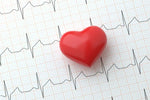What Are The Symptoms Of Type 2 Diabetes?

Type 2 diabetes symptoms often appear gradually over several years and are so minor that you may not even notice them. Many people who have diabetes have no signs or symptoms. Some people do not realize they have diabetes until they start experiencing blurred vision or heart disease symptoms.
What are the 3 most common symptoms of undiagnosed diabetes?
- Increased thirst or polydipsia;
Increased thirst is caused by high blood sugar levels.
- Frequent urination or polyuria;
Polyuria can be a sign of diabetes mellitus as well as diabetes insipidus. Both conditions are serious and require further tests.
- Increased hunger or polyphagia.
People with diabetes are frequently more hungry because diabetes makes it more difficult for the body to convert the glucose from nutrients into energy.
Among the other indications and symptoms of type 2 diabetes are:
- Weight loss that was not intended;
- High blood pressure;
- Itchy skin rash (especially on the hands);
- Fatigue and weakness;
- Blurred vision;
- Slow-healing sores or wounds that do not respond to treatment;
- Frequent infections;
- Numbness or tingling in the hands or feet;
- Darkened skin patches, generally throughout the armpits and neck.
If you are noticing any symptoms of diabetes make sure to contact your health care provider.
What is type 2 diabetes?
Diabetes type 2 is a disease in which the body's capacity to regulate and use blood glucose (sugar) as fuel is impaired. As a result of this long-term (chronic) condition, too much sugar accumulates in the bloodstream. High blood glucose levels can eventually cause problems with the circulatory, neurological, and immune systems.
The most frequent type of diabetes is type 2 . Type 2 diabetes affects around 29 million people in the U.S. The estimations of some reports are showing that another 84.1 million adults in the U.S. have prediabetes. This indicates that their blood sugar or glucose levels are high but not high enough to be diagnosed with diabetes. According to the CDC, those with prediabetes who do not seek treatment are more likely to develop type 2 diabetes within five years.
Type 2 diabetes is more common in people in their forties and fifties. It was previously known as adult-onset diabetes. This type of diabetes, on the other hand, affects children and teenagers, mainly as a result of childhood obesity. Most likely, it is a combination of factors that increases the risk of type 2 diabetes.
Insulin resistance
Your main source of energy is glucose. It comes from the meals that you ingest. Insulin is a hormone that aids glucose absorption and energy production in your cells. Your body either does not create enough insulin or is resistant to insulin if you have diabetes. As a result of not producing enough insulin, the glucose levels in your blood stay in your bloodstream, and not enough enters your cells. To compensate, your pancreas generates more insulin. Over time, your blood sugar levels rise. This is also called insulin resistance. Having high blood glucose might lead to health issues over time. However, people with type 2 diabetes need to take efforts to control their diabetes and avoid these health issues.
Symptoms of insulin resistance
It is impossible to know if you have insulin resistance based on how you feel. A blood test to monitor your blood sugar levels is required. Similarly, without seeing your doctor, you will not know if you have high blood pressure, low "good" cholesterol levels, or high triglycerides, which are all symptoms of insulin resistance syndrome.
Insulin resistance is associated with the following signs and symptoms:
- A waistline measuring more than 40 inches in men and more than 35 inches in women;;
- Blood pressure levels of 130/80 or greater are considered high;
- A fasting blood glucose level of more than 100 mg/dL;
- After fasting your triglyceride level are more than 150 mg/dL;
- Low HDL cholesterol levels fewer than 50 mg/dL in women and 40 mg/dL in men;
- Tags on the skin;
- Acanthosis nigricans are black, velvety skin patches.
Type 2 diabetes has no cure, but decreasing weight, eating healthily, and exercising can help you manage it. Diabetes care requires lifestyle changes. If diet and exercise are not enough to manage your blood sugar, your health care provider will recommend diabetes medications or insulin therapy.
What are the risk factors?
Your risk of getting type 2 diabetes is influenced by several variables, including your genes and lifestyle. Although risk variables such as family history, age, or ethnicity are unchangeable, lifestyle risk factors such as diet, physical activity, and weight can be altered. These lifestyle modifications may have an impact on your risk of getting type 2 diabetes. Certain things make it more likely that you will get type 2 diabetes.
Check out the list of type 2 diabetes risk factors below to see if any of them apply to you. Changing the factors that you have control over can help you delay or prevent type 2 diabetes. You are more likely to develop diabetes if you:
- You are more likely to develop type 2 diabetes if you are overweight or obese;
- You are 45 years or older;
- You have a family history of diabetes;
- You have high blood pressure;
- You have a high triglyceride level or a low HDL (“good”) cholesterol level;
- You have given birth to a baby weighing 9 pounds or more or have a history of gestational diabetes;
- You are not physically active;
- Although it is unclear why people of certain races and ethnicities are more likely to develop type 2 diabetes than white people are. Those are African American, Alaska Native, American Indian, Asian American, Hispanic/Latino, Native Hawaiian, or Pacific Islander;
- You have a history of heart disease or stroke;
- You have depression ;
- You have polycystic ovary syndrome also called PCOS;
- You have acanthosis nigiricans or also known as dark, thick, and velvety skin around your neck or armpits;
How is type 2 diabetes diagnosed?
Based on blood tests, your doctor can diagnose type 2 diabetes. The following tests are used to diagnose diabetes:
- The A1C test determines how much sugar is in your blood;
- FPG or fasting plasma glucose test;
- RPG or random plasma glucose test;
- Glucose tolerance test;
- OGTT or Test for oral glucose tolerance.
Can type 2 diabetes be prevented?

Diabetes is a dangerous disease that can typically be controlled with physical activity, a healthy diet, and proper insulin and other drugs. Premature death, kidney disease, vision loss, heart disease, increased risk for stroke because of the damage to blood vessels, renal failure, and amputation of toes, feet, or legs are among the major health consequences associated with people with diabetes. If you have prediabetes, losing 7% to 10% of your body weight can reduce the risk of diabetes.
If you have risk factors for type 2 diabetes, research like the Diabetes Prevention Program sponsored by the National Institutes of Health has shown that you can take measures to reduce your chances of developing the disease. Here are some strategies for lowering your risk:
- If you are overweight or obese, lose weight and keep it off. By decreasing 5 to 7% of your present weight, you may be able to prevent or delay developing type 2 diabetes. If you weigh 200 pounds, you should aim to drop 10 to 14 pounds.
- Increase your physical activity. Five days a week, get at least 30 minutes of physical activity, such as walking. If you haven't been active in a while, talk to your doctor about the best activities for you. Begin cautiously and work your way up to your goal.
- Healthy eating is important. Reduce the number of calories you consume each day by eating smaller amounts. This will help you lose weight. Another strategy to cut calories is to eat foods that are lower in fat. Drink water instead of sugary drinks. These lifestyle changes will help you lower your risk of developing type 2 diabetes.
What are the treatments for type 2 diabetes?
Type 2 diabetes treatment entails keeping track of your blood sugar levels. Living a healthy lifestyle allows many people to do so. Some people also require medication.
Following a balanced food plan and engaging in regular physical activity are both essential components of a healthy lifestyle and diabetes care. You must learn to balance what you eat and drink with physical activity and, if necessary, diabetic medication.
Oral medications, insulin, and various injectable medications are all used to treat diabetes. To control their diabetes, some patients will need to take more than one type of medication over time.
You will need to monitor your blood glucose levels frequently. Your doctor will advise you on how often you should do it.
It is also critical to keep your blood pressure and cholesterol readings within the ranges set by your doctor. Make sure you have your screening tests done regularly.
Join our community

While we all share the same diagnosis, we each have our own story. Within this story, we remember the day we were diagnosed, from the little details like the layout of the doctor’s office to the life-changing words spoken that lead to the start of a completely new way of life. These thoughts have created and molded a story that you might think are concrete, yet we are here to tell you that those stories are as fluid as water and can be reshaped! Winning Type 2 Diabetes Together is an ever-growing group of over 40,000 diabetics who help each other, support each other, and laugh together! We want YOU to join the fun!



